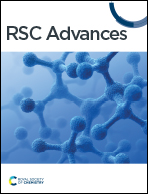Research and progress of chemical depolymerization of waste PET and high-value application of its depolymerization products
Abstract
PET (polyethylene terephthalate) has good transparency, corrosion resistance, gas barrier properties and mechanical properties, and is widely used in beverage bottles, fabrics, food packaging, tires, films, engineering plastics and other fields. With the rapid growth in demand and use of PET materials, the pollution of waste PET to the environment has become increasingly prominent. The recycling methods of waste PET mainly include primary recycling, mechanical recycling, chemical recycling, and energy recycling. The chemical recycling method is of great significance for solving environmental problems and reducing the plastic industry's dependence on petrochemical resources, and is an inevitable choice for realizing PET closed-loop recycling. In this paper, the chemical depolymerization methods of waste PET, the types of alcoholysis catalysts with the greatest possibility of industrialization, and the high-value application research of chemical recovery products are reviewed in order to have a good reference significance and promote the recycling and high-value utilization of waste PET.

- This article is part of the themed collection: 2022 Reviews in RSC Advances

 Please wait while we load your content...
Please wait while we load your content...